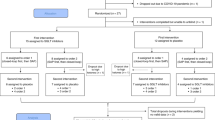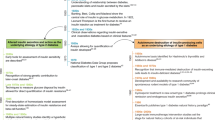Abstract
The importance of strict glycaemic control in reducing diabetes-related outcomes is well recognised. Yet, despite the range of available treatment options, clinical experience suggests that individuals with diabetes frequently fail to achieve good glucose control. Instead, patients often have poorly controlled, unpredictable blood glucose levels. In insulin-treated patients, one of the reasons for this may be the inherently variable action of exogenously injected insulin. For example, the currently available longer-lasting insulin preparations that aim to provide a continuous basal level of circulating insulin are associated with markedly variable action both between and within subjects. Unpredictable insulin action contributes to variable blood glucose control, which in addition to increasing the risk of hypoglycaemia has also been shown to be an independent risk factor for mortality. It is hoped that advances in longer-lasting insulin preparations will provide significant benefits to patients, improving control and reducing variability. A new, long-lasting analogue, insulin detemir, has been shown to be significantly less variable than other basal insulin preparations in pharmacological and clinical studies. The improved predictability in insulin response offered by insulin detemir may be associated with a number of clinical benefits including a reduction in hypoglycaemia and weight gain.
This is a preview of subscription content, access via your institution
Access options
Subscribe to this journal
Receive 12 print issues and online access
$259.00 per year
only $21.58 per issue
Buy this article
- Purchase on Springer Link
- Instant access to full article PDF
Prices may be subject to local taxes which are calculated during checkout




Similar content being viewed by others
References
Davies M . The reality of glycaemic control in insulin treated diabetes: defining the clinical challenges. Int J Obes 2004; 28 (Suppl 2): S14–S22.
Lepore M, Pampanelli S, Fanelli C, Porcellati F, Bartocci L, Di Vincenzo A, Cordoni C, Costa E, Brunetti P, Bolli GB . Pharmacokinetics and pharmacodynamics of subcutaneous injection of long-acting human insulin analog glargine, NPH insulin, and Ultralente human insulin and continuous subcutaneous infusion of insulin lispro. Diabetes 2000; 49: 2142–2148.
Pieber TR, Plank J, Goerzer E, Sommer R, Wutte A, Sinner F, Bodenlenz M, Endahl L, Draeger E, Zdravkovic M . Duration of action, pharmacodynamic profile and between-subject variability of insulin detemir in subjects with type 1 diabetes. Diabetologia 2002; 45 (Suppl. 2): A257.
Starke AA, Heinemann L, Hohmann A, Berger M . The action profiles of NPH insulin preparations. Diabetes Med 1989; 6: 239–244.
Woodworth JR, Howey DC, Bowsher RR . Establishment of time-action profiles for regular and NPH insulin using pharmacodynamic modeling. Diabetes Care 1994; 17: 64–69.
Moberg EA, Lins PE, Adamson UK . Variability of blood glucose levels in patients with type 1 diabetes mellitus on intensified insulin regimens. Diabetes Metab 1994; 20: 546–552.
Muggeo M, Zoppini G, Bonora E, Brun E, Bonadonna RC, Moghetti P, Verlato G . Fasting plasma glucose variability predicts 10-year survival of type 2 diabetic patients: the Verona Diabetes Study. Diabetes Care 2000; 23: 45–50.
Chen JW, Christiansen JS, Lauritzen T . Limitations to subcutaneous insulin administration in type 1 diabetes. Diabetes Obes Metab 2003; 5: 223–233.
Heinemann L . Variability of insulin absorption and insulin action. Diabetes Technol Ther 2002; 4: 673–682.
Lauritzen T, Faber OK, Binder C . Variation in 125I-insulin absorption and blood glucose concentration. Diabetologia 1979; 17: 291–295.
Lauritzen T, Pramming S, Gale EA, Deckert T, Binder C . Absorption of isophane (NPH) insulin and its clinical implications. BMJ (Clin Res Ed) 1982; 285: 159–162.
Galloway JA, Spradlin CT, Nelson RL, Wentworth SM, Davidson JA, Swarner JL . Factors influencing the absorption, serum insulin concentration, and blood glucose responses after injections of regular insulin and various insulin mixtures. Diabetes Care 1981; 4: 366–376.
Scholtz HE, van Niekerk N, Meyer BH, Rosenkranz B . An assessment of the variability in the pharmacodynamics (glucose lowering effect) of HOE901 compared to NPH and Ultralente human insulins using the euglycaemic clamp technique. Diabetologia 1999; 42: A235.
Kurtzhals P . Engineering predictability and protraction in a basal insulin analogue: the pharmacology of insulin detemir. Int J Obes 2004; 28 (Suppl 2): S23–S28.
Kurtzhals P, Colding-Jorgensen M . Albumin binding of insulin detemir reduces the risk for hypoglycaemic events. Diabetes 53 (Suppl 2): A477.
Danne T, Lüpke K, Walte K, von Schuetz W, Gall M-A . Insulin detemir is characterized by a consistent pharmacokinetic profile across age groups in children, adolescents and adults with type 1 diabetes. Diabetes Care 2003; 26: 3087–3092.
Heise T, Nosek L, Rønn BB, Endahl L, Heinemann L, Kapitza C, Draeger E . Lower within-subject variability of insulin detemir in comparison to NPH insulin and insulin glargine in people with type 1 diabetes. Diabetes 2004; 53: 1614–1620.
Strange P, McGill J, Mazzeo M . Reduced pharmacokinetic (PK) variability of a novel, long-acting insulin analog. Diabetes 1999; 48 (Suppl 1): A103.
Haak T, Tiengo A, Draeger E, Suntum M, Waldhäusl W . Lower within-subject variability of fasting blood glucose and reduced weight gain with insulin detemir compared to NPH insulin in patients with type 2 diabetes. Diabetes Obes Metab 2004, (in press).
Hermansen K, Fontaine P, Kukolja K, Peterkova V, Leth G, Gall M-A . Insulin analogues (insulin detemir and insulin aspart) versus traditional human insulins (NPH insulin and regular human insulin) in basal-bolus therapy for patients with type 1 diabetes. Diabetologia 2004; 47: 622–629.
Home P, Bartley P, Russell-Jones D, Hanaire-Broutin H, Heeg J-E, Abrams P, Landin-Olsson M, Hylleberg B, Lang H, Draeger E, Study to Evaluate the Administration of Detemir Insulin Efficacy, Safety and Suitability (STEADINESS) Study Group. Insulin detemir offers improved glycemic control compared to NPH insulin in people with type 1 diabetes: a randomised clinical trial. Diabetes Care 2004; 27: 1081–1087.
Pieber T, Grill V, Kristensen A, Draeger E . Timing of dose-administration of insulin detemir is flexible and results in lower and less variable glucose levels and less weight gain than NPH insulin. Diabetic Medicine 2004, (in press).
Robertson K, Schonle E, Gucev Z et al. Benefits of insulin detemir over NPH insulin in children and adolescents with type 1 diabetes: lower and more predictable fasting plasma glucose and lower risk of nocturnal hypoglycaemia. Diabetes 2004; 53 (Suppl 2): A144.
Russell-Jones D, Draeger E, Simpson R, Bolinder J, Hylleberg B . Effects of once-daily insulin detemir or NPH insulin on blood glucose control in people with type 1 diabetes using a basal-bolus regimen. Clin Ther 2004; 26: 724–736.
Vague P, Selam J-L, Skeie S, De Leeuw I, Elte JW, Haahr H, Kristensen A, Draeger E . Insulin detemir is associated with more predictable glycemic control and reduced risk of hypoglycemia than NPH insulin in patients with type 1 diabetes on a basal-bolus regimen with premeal insulin aspart. Diabetes Care 2003; 26: 590–596.
Mathieu C . Can we reduce hypoglycaemia with insulin detemir? Int J Obes 2004; 28 (Suppl 2): S35–S40.
Fritsche A, Häring H . At last, a weight neutral insulin? Int J Obes 2004; 28 (Suppl 2): S41–S46.
Author information
Authors and Affiliations
Corresponding author
Rights and permissions
About this article
Cite this article
Russell-Jones, D. Insulin detemir: improving the predictability of glycaemic control. Int J Obes 28 (Suppl 2), S29–S34 (2004). https://doi.org/10.1038/sj.ijo.0802747
Published:
Issue Date:
DOI: https://doi.org/10.1038/sj.ijo.0802747
Keywords
This article is cited by
-
The role of new basal insulin analogues in the initiation and optimisation of insulin therapy in type 2 diabetes
Acta Diabetologica (2008)
-
The reality of glycaemic control in insulin treated diabetes: defining the clinical challenges
International Journal of Obesity (2004)
-
Engineering predictability and protraction in a basal insulin analogue: the pharmacology of insulin detemir
International Journal of Obesity (2004)



